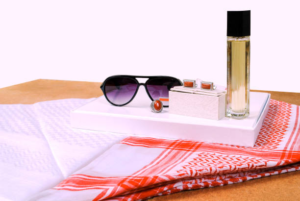What Is Brass, and How Is It Used?
Brass is a versatile alloy made from copper and zinc. The proportions of these metals can be adjusted to create different types of brass, each with unique properties. Brass is valued for its strength, corrosion resistance, and decorative golden color. It also offers excellent machinability, making it ideal for various industrial and decorative uses. From musical instruments to plumbing fixtures, brass plays a vital role in many applications due to its durability and versatility.
This article explains brass, how it is made, and its popular properties. It also explains how it differs from other alloys and provides top tips for success.
What Is Brass, and How Is It Made?
Brass is an alloy made by combining copper and zinc, with the proportions of these metals influencing its characteristics. Typically, brass contains 60-70% copper and 30-40% zinc, but other metals like tin, lead, or aluminum can be added to enhance specific properties. For instance, adding lead improves machinability, while tin increases corrosion resistance. These variations result in different types of brass suited for various uses.
Making brass begins with melting copper and zinc in a high-temperature furnace. The metals mix thoroughly to form a uniform alloy. Additional elements may be introduced during this stage depending on the intended application. Once the mixture is complete, it is poured into molds to form ingots or cast into specific shapes. These ingots can later be rolled, drawn, or forged into sheets, rods, wires, or other forms.
Modern production methods often involve recycling scrap brass, as the alloy can be quickly melted and reused without losing its properties. This sustainable aspect makes brass a cost-effective and environmentally friendly material widely used in many industries.
Key Properties that Make Brass a Popular Material
Here are the key properties that make brass a popular material:
Corrosion Resistance
Brass is excellently resistant to corrosion, especially from water and humid environments. This makes it ideal for plumbing, marine hardware, and outdoor fixtures. Unlike iron or steel, brass doesn’t rust. It also resists tarnishing better than pure copper, maintaining its appearance over time. This property ensures longevity in harsh conditions, reducing maintenance and replacement costs.
Strength and Durability
Brass is strong enough to handle mechanical stress while being durable. Its toughness allows it to withstand wear and tear in demanding applications like gears, bearings, and valves. Despite its strength, it retains some flexibility, making it less prone to cracking under pressure than more brittle materials.
Malleability
Brass is highly malleable, meaning it can be easily shaped, bent, or formed into intricate designs. This property is valuable for manufacturing small, detailed parts like screws, nuts, and decorative elements. Brass is also compatible with CNC machining, which means it can be cut, drilled, and shaped precisely, making it a preferred material in aerospace, automotive, and furniture design industries.
Attractive Appearance
The golden, polished look of brass makes it a favorite choice for decorative applications. Its warm metallic sheen is used in jewelry, musical instruments, and architectural details like railings, doorknobs, and light fixtures. Brass can also be finished with coatings or patinas for different colors and textures, adding versatility to its decorative use.
Common Applications of Brass in Construction and Design
Here are some common applications of brass in construction and design:
Architectural Features
Brass is used for railings, handrails, and door hardware, such as knobs, hinges, and locks. Its golden hue adds elegance to interiors and exteriors. Architects and designers also use brass for trim, cladding, and panels to enhance the visual appeal of buildings.
Plumbing Fixtures
Brass is a top choice for faucets, valves, and fittings due to its corrosion resistance and ability to withstand constant water flow. It doesn’t leach harmful substances into water, making it a safe material for potable water systems. Additionally, its durability ensures long-lasting performance in both residential and commercial plumbing.
Lighting Fixtures
Chandeliers, lamps, and wall sconces often feature brass due to their reflective surface and warm tone. Its machinability allows intricate designs, while its resistance to tarnishing ensures these fixtures maintain their beauty over time.
Decorative Items
In interior design, brass appears in vases, mirrors, candleholders, and sculptures. Its ability to take on various finishes, such as polished, brushed, or antique, makes it versatile for creating custom decorative elements.
Musical Instruments
Although not directly tied to construction, brass is a staple in musical instrument design due to its acoustical properties. Instruments like trumpets, trombones, and saxophones benefit from brass’s ability to produce precise, resonant tones.
Signage and Nameplates
Brass is commonly used for engraved signs, plaques, and nameplates indoors and outdoors. Its corrosion resistance and attractive appearance ensure these items remain legible and visually appealing for years.
How Does Brass Compare to Other Alloys?
This section compares brass to other alloys, explaining their differences:
Brass vs. Bronze
Brass is made from copper and zinc, while bronze is an alloy of copper and tin. Because of its tin content, bronze generally offers superior corrosion resistance, particularly in marine environments. Brass is more than adequate for most applications involving fresh water or humid conditions. In terms of strength, bronze is harder and more durable, making it ideal for heavy-duty uses like bearings, gears, and bushings. Brass, on the other hand, is softer and easier to machine, making it a better choice for intricate components or decorative applications.
Brass vs. Copper
While brass is an alloy, copper is a pure metal. Brass offers greater strength and hardness due to the addition of zinc, making it more durable for practical applications. Copper, however, excels in electrical and thermal conductivity, which is why it’s often preferred for wiring and heat exchangers. Brass, though slightly less conductive, provides better machinability and corrosion resistance. Additionally, brass’s golden appearance makes it more desirable for decorative and aesthetic purposes than copper’s reddish hue.
Brass vs. Stainless Steel
Stainless steel is stronger and more resistant to extreme temperatures than brass, making it better for structural and high-heat applications. However, brass has superior machinability and is easier to shape into intricate designs. Brass also has a natural corrosion resistance, especially in water, whereas stainless steel relies on its chromium content to form a protective oxide layer. Aesthetically, brass offers a warmer, more decorative appearance, while stainless steel provides a sleek, modern look.
Brass vs. Aluminum
Brass is heavier and stronger than aluminum, making it better suited for applications requiring durability and wear resistance. Aluminum is much lighter and less expensive, so it’s often used in industries like automotive and aerospace. While aluminum is naturally corrosion-resistant, brass provides better machinability and has a more premium appearance. For decorative purposes, brass is typically preferred for its golden color, whereas aluminum has a duller, silvery finish.
Brass vs. Zinc Alloys
Brass contains zinc as one of its primary components, but pure zinc alloys, such as zamak, have different characteristics. Zinc alloys are cheaper and lighter, making them ideal for mass-produced items like die-cast parts. However, brass is stronger, more durable, and offers greater corrosion resistance. It’s also easier to polish and finish, making it a preferred choice for applications where appearance matters, such as jewelry or architectural features.
Tips for maintaining brass to prevent tarnishing
Here are the top tips for maintaining brass to avoid tarnishing:
- Clean Regularly: Regular cleaning prevents dirt and grime buildup, which can accelerate tarnishing. Use warm, soapy water and a soft cloth to clean brass items. Avoid abrasive scrubbing tools that may scratch the surface. Rinse thoroughly and dry immediately to prevent water spots.
- Polish When Needed: Polishing brass restores its shine and removes tarnish. Use a commercial brass polish or make a homemade solution with lemon juice and baking soda. Apply the polish with a soft cloth, rub gently in a circular motion, and buff it to shine. For store-bought polishes, always follow the manufacturer’s instructions.
- Apply Protective Coatings: A clear lacquer or wax coating can protect brass from air exposure, which causes tarnishing. Apply a thin, even layer of lacquer or use a brass-specific wax. This forms a barrier that reduces the frequency of cleaning and polishing.
- Store Properly: When not in use, store brass items in a dry environment to prevent exposure to moisture. Wrap small brass items in anti-tarnish cloth or paper to minimize air contact. Avoid storing them near humidity sources like bathrooms or basements.
- Avoid Harsh Chemicals: Harsh cleaning agents or ammonia-based products can damage brass or strip its protective coatings. Stick to mild cleaners designed specifically for brass. If the brass is plated, ensure the cleaning method suits the thin plating layer.
- Handle with Care: Frequent handling can transfer oils and sweat from your skin onto brass, accelerating tarnishing. Wear gloves when handling decorative or polished brass items, or wipe them down after use to remove residues.
Conclusion
Brass is a versatile alloy known for its durability, corrosion resistance, and aesthetic appeal. Its unique properties make it popular across industries, from construction and plumbing to decorative design and musical instruments. Proper maintenance can preserve brass’s appearance and performance for years, ensuring it remains a reliable and attractive material in various uses.











Post Comment